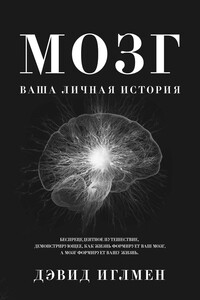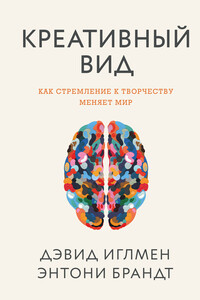Scutt, D., and J. T. Manning. 1996. “Symmetry and ovulation in women”. Human Reproduction 11: 2477–2480.
Selten, J. P., E. Cantor-Graae, and R. S. Kahn. 2007. “Migration and schizophrenia”. Current Opinion in Psychiatry 20 (2): 111–115.
Shams, L., Y. Kamitani, and S. Shimojo 2000. “Illusions: What you see is what you hear”. Nature 408 (6814): 788.
Sheets-Johnstone, M. 1998. “Consciousness: a natural history”. Journal of Consciousness Studies 5 (3): 260–294.
Sherrington, C. 1953. Man on His Nature. 2nd ed. New York: Doubleday.
Shipley, T. 1964. “Auditory flutter-driving of visual flicker”. Science 145: 1328–1330.
Simons, D. J. 2000. “Current approaches to change blindness”. Visual Cognition 7: 1–15.
Simons, D. J., and D. T. Levin. 1998. “Failure to detect changes to people during a real-world interaction”. Psychonomic Bulletin & Review 5 (4): 644–649.
Singer, W. 2004. “Keiner kann anders, als er ist”. Frankfurter Allgemeine Zeitung, January 8, 2004. (In German.)
Singh, D. 1993. “Adaptive significance of female physical attractiveness: Role of waist-to-hip ratio”. Journal of Personality and Social Psychology 65: 293–307.
Singh, D. 1994. “Is thin really beautiful and good? Relationship between waist-to-hip ratio (WHR) and female attractiveness”. Personality and Individual Differences 16: 123–132.
Snowden, R. J., N. S. Gray, J. Smith, M. Morris, and M. J. MacCulloch. 2004. “Implicit affective associations to violence in psychopathic murderers”. Journal of Forensic Psychiatry and Psychology 15: 620–641.
Soon, C. S., M. Brass, H. J. Heinze, and J. D. Haynes. 2008. “Unconscious determinants of free decisions in the human brain”. Nature Neuroscience 11 (5): 543–545.
Stanford, M. S., and E. S. Barratt. 1992. “Impulsivity and the multi-impulsive personality disorder”. Personality and Individual Differences 13 (7): 831–834.
Stanovich, K. E. 1999. Who is Rational? Studies of Individual Differences in Reasoning. Mahweh, NJ: Erlbaum.
Stern, K., and M. K. McClintock. 1998. “Regulation of ovulation by human pheromones”. Nature 392: 177–179.
Stetson, C., X. Cui, P. R. Montague, and D. M. Eagleman. 2006. “Motor-sensory recalibration leads to an illusory reversal of action and sensation”. Neuron 51 (5): 651–659.
Stetson, C., M. P. Fiesta, and D. M. Eagleman. 2007. “Does time really slow down during a frightening event?” PLoS One 2 (12): e1295.
Stuss, D. T., and D. F. Benson. 1986. The Frontal Lobes. New York: Raven Press.
Suomi, J. S. 2004. “How gene — environment interactions shape biobehavioral development: Lessons from studies with rhesus monkeys”. Research in Human Development 3: 205–222.
—. 2006. “Risk, resilience, and gene x environment interactions in rhesus monkeys”. Annals of the New York Academy of Science 1094: 52–62.
Symonds, C, and I. MacKenzie. 1957. “Bilateral loss of vision from cerebral infarction”. Brain 80 (4): 415–455.
Terzian, H., and G. D. Ore. 1955. “Syndrome of Klüver and Bucy: Reproduced in man by bilateral removal of the temporal lobes”. Neurology 5 (6): 373–380.
Tinbergen, N. 1952. “Derived activities: Their causation, biological significance, origin, and emancipation during evolution”. Quarterly Review of Biology 27: 1–32.
Tom, G., C. Nelson, T. Srzentic, and R. King. 2007. “Mere exposure and the endowment effect on consumer decision making”. Journal of Psychology 141 (2): 117–125.
Tong, F., M. Meng, R. Blake. 2006. “Neural bases of binocular rivalry”. Trends in Cognitive Sciences 10: 502–511.
Tramo, M. J., K. Baynes, R. Fendrich, G. R. Mangun, E. A. Phelps, P. A. Reuter-Lorenz, and M. S. Gazzaniga. 1995. “Hemispheric specialization and interhemispheric integration”. In Epilepsy and the Corpus Callosum. 2nd edition. New York: Plenum Press.
Tresilian, J. R. 1999. “Visually timed action: Time-out for ‘Tau’?” Trends in Cognitive Sciences 3: 301–310.
Trimble, M., and A. Freeman. 2006. “An investigation of religiosity and the Gastaut-Geschwind syndrome in patients with temporal lobe epilepsy”. Epilepsy and Behaviour 9 (3): 407–414.
Tulving, E., D. L. Schacter, and H. A. Stark. 1982. “Priming effects in word-fragment completion are independent on recognition memory”. Learning, Memory, and Cognition 8: 336–341.






